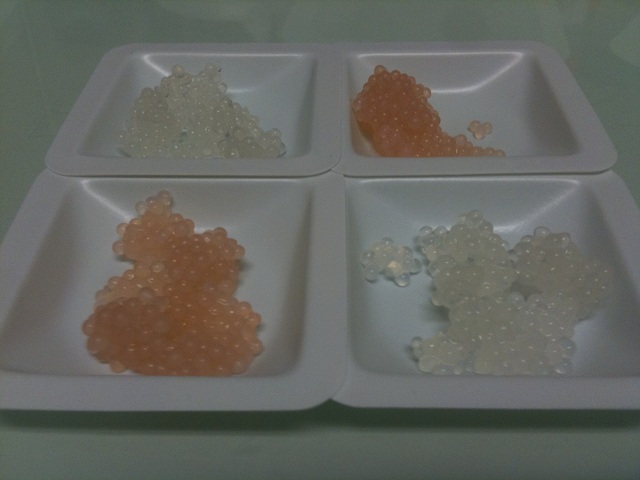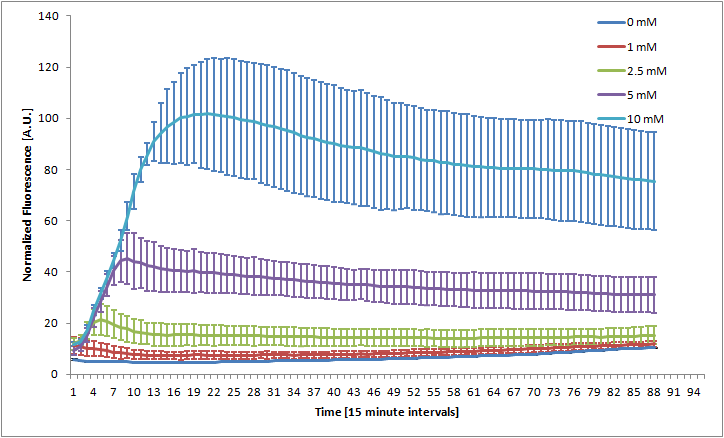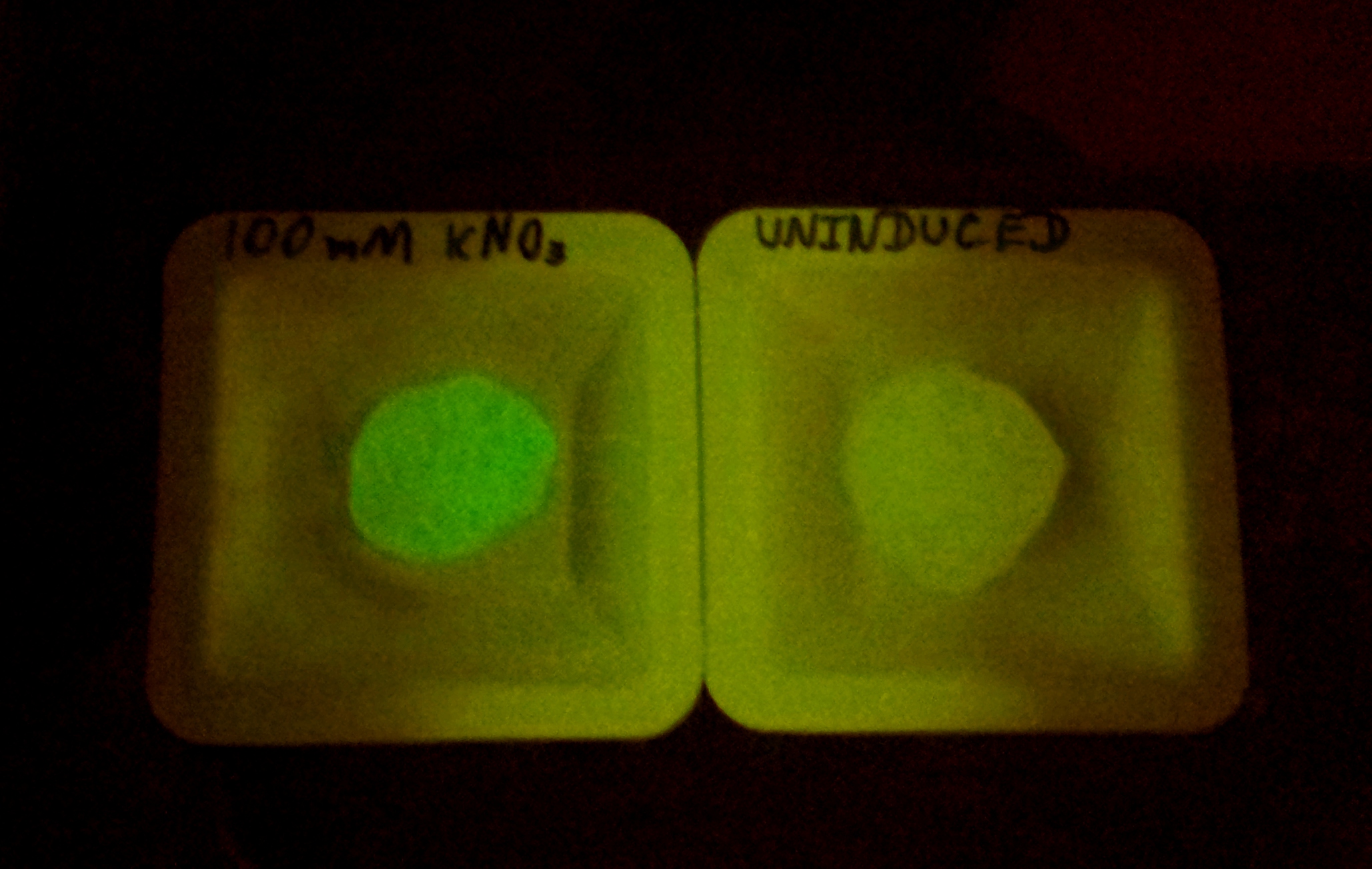Team:Paris Bettencourt/Encapsulation
From 2012.igem.org
Iversondylan (Talk | contribs) |
Iversondylan (Talk | contribs) |
||
| Line 9: | Line 9: | ||
Our interest is to take the concept of cell encapsulation further by implementing total cell entrapment. While normal gel beads protect the bacteria within from the surroundings, we are here to ensure the surroundings are protected from the bacteria within the beads. A method was found for encapsulation and entrapment of yeast [REF] and was adapted to synthetic bacterial systems. | Our interest is to take the concept of cell encapsulation further by implementing total cell entrapment. While normal gel beads protect the bacteria within from the surroundings, we are here to ensure the surroundings are protected from the bacteria within the beads. A method was found for encapsulation and entrapment of yeast [REF] and was adapted to synthetic bacterial systems. | ||
| - | [[File: | + | [[File:ParisBettencourt12Beads2.jpg|frameless|center|600px]] |
==Objectives== | ==Objectives== | ||
Revision as of 20:46, 26 September 2012
Contents |
Overview
Polymer gels have found a place in microbial biotechnology by providing a means of spatial organization. The micro-environments within gel beads can grant the microbes within protection, nutrients, and selective agents/chemicals. Given this, gel beads are already attractive for environmental applications of genetically modified bacteria. Synthetic bacterial systems may benefit from (or require) nutrients and agents added to gel beads. Many other practical reasons for use of beads exist, such as transportation and analysis.
Our interest is to take the concept of cell encapsulation further by implementing total cell entrapment. While normal gel beads protect the bacteria within from the surroundings, we are here to ensure the surroundings are protected from the bacteria within the beads. A method was found for encapsulation and entrapment of yeast [REF] and was adapted to synthetic bacterial systems.
Objectives
Our goal is to design a live-bacteria entrapment system. More than just encapsulating bacteria, we want to fully prevent their escape from the bead body into the surroundings.
Alginate and other gel-based beads have been used successfully to prolong enzymatic activity in bioreactors[REF], but systems such as these are usually designed to allow steady release of microbes. This is not acceptable when microbes containing potentially dangerous synthetic genes are being used in the environment, so we aim to prevent release of bacteria entirely.
Design
Experiments and results
Cell Containment Assay
Our objective is to entrap cells that are still viable and able to perform metabolism. To asses this, beads were suspended in buffer and allowed to incubate at room temperature over several days. Presuming that treated beads could result in total cell containment, we wished to see if more viable cells would be released by physically destroying the beads.
Experimental setup
- 2% Alginate beads containing cells were prepared (50mL saturated culture resuspended in 15 mL fresh LB and mixed with 15 mL 4% Alginate).
- 4g beads were set aside in PBS at 4° as a negative control for containment (untreated alginate).
- 8g beads were treated as described above with polyethyleneimine and glutaraldehyde.
- 4g of treated beads were broken by cutting with a razor blade
- 4g of Untreated, Treated, and Treated & Broken beads were suspended in PBS buffer and left at room temperature.
- 100μL of supernatant was plated periodically to quantify release of cells.
Results
Present your results
Further Experiments
Since our aim is to provide a safety system that will work with any microbial system, we will continue efforts to characterize functioning SynBio systems within stabilized beads. These experiments could involve biosensors such as Bristol 2010’s nitrate reporter, our own biosafety systems, or other iGEM biobrick systems.
Additional Characerization of Bristol 2010 Nitrate Reporter
 "
"


 Overview
Overview Delay system
Delay system Semantic containment
Semantic containment Restriction enzyme system
Restriction enzyme system MAGE
MAGE Encapsulation
Encapsulation Synthetic import domain
Synthetic import domain Safety Questions
Safety Questions Safety Assessment
Safety Assessment


